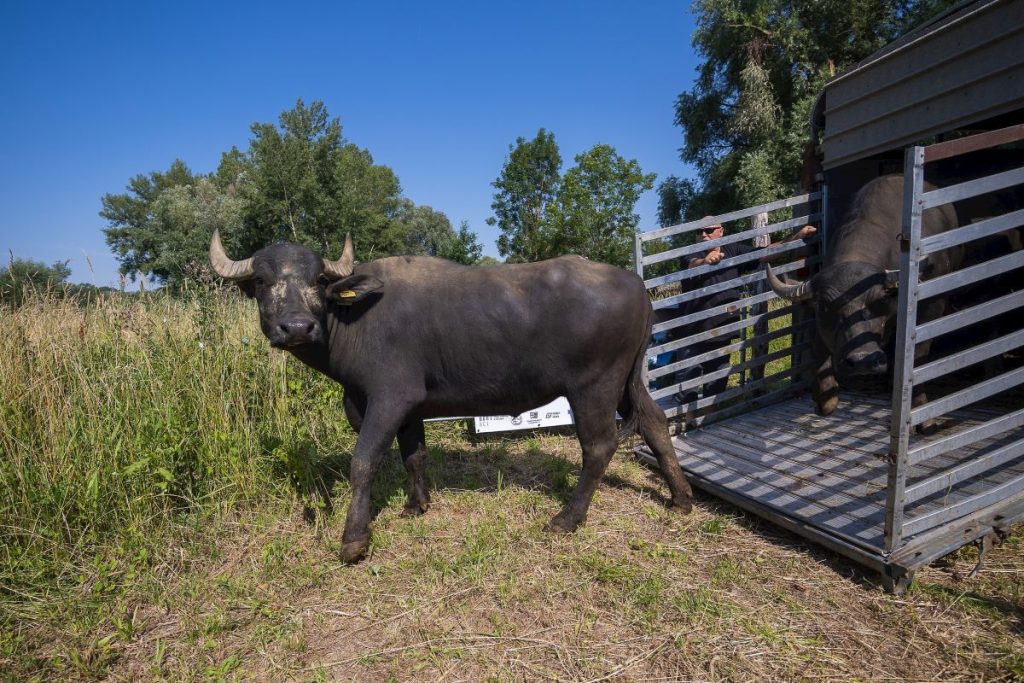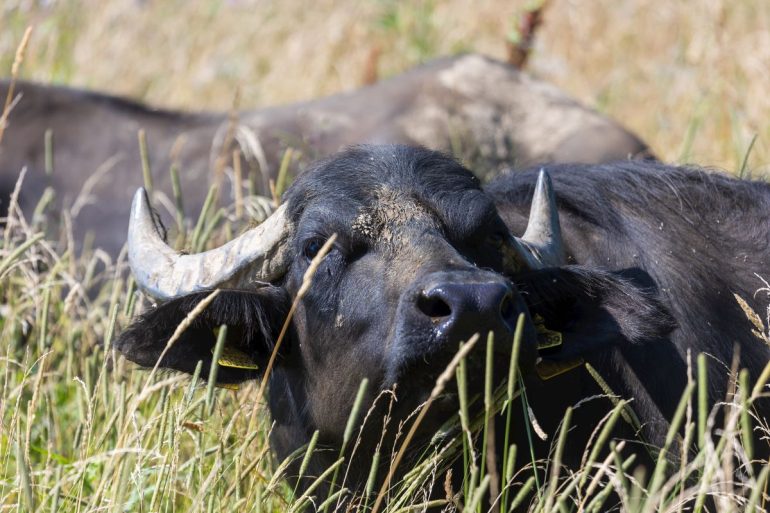A trio of water buffalos was released last week in the Central Reservoir of the Nová Mlýna Water Works, to help maintain the colourful mosaic of wetland vegetation in the first protected area in South Moravia. The introduction of long-term grazing of large herbivores on the wetlands is taking place within the LIFE in Salt Marshes project, launched by the specialist workplace Envirop at Masaryk University.
The trio of buffalos is now occupying an area of around 5.5 hectares in a newly installed mobile electric enclosure. They will graze mainly on reeds and goldenrod, which often overgrow protected wetlands and crowd out all other types of plants, resulting in monotonous stands where nothing else grows or lives. By grazing from the monotonous vegetation, the buffalo will gradually create a mosaic of different habitats, where many more species of insects, birds, amphibians and small mammals will find homes.
“Grazing by large herbivores is used as a way of managing protected areas in many places across Europe,” explained Barbora Pelánková, project manager at Envirop, from the Department of Botany and Zoology at Masaryk University Faculty of Science. “The aim of our project is to start and sustain this method of restoration and maintenance of protected wetlands in South Moravia, including in cooperation with local breeders and farmers.”

Water buffalos have been bred in Europe since at least Roman times, grazing mainly in southern Europe. There have been many examples of good practice where buffalo grazing has helped with the maintenance of protected areas, in Hungary, Austria, Slovakia and in the Czech region of Hradec Králové. The buffalos were loaned to South Moravia from the Ohař farm in Mirovice, South Bohemia. Their presence will help to replace all the natural processes that were once ensured by the previous ungulate species that inhabited the area.
“Buffaloes are perfect for this location,” added Gašpar Čamlík, executive director of the South Moravian branch of the Czech Ornithological Society and founder of the Kosteliska bird park, which has been using large herbivores to maintain a colourful wetland environment for protected species for several years. “They are easy to care for, not picky about grazing, and tolerate long-term waterlogged environments well. They absolutely love rolling in the mud, which will help to expand pools that can be used by other animals, such as amphibians and insects, and they also have a very calm nature.”
Envirop’s LIFE in Salt Marshes project uses grazing herbivores for the purpose of restoration and maintenance of species-rich wetlands. The project partner is the South Moravian branch of the Czech Ornithological Society. The introduction of buffalo grazing in the Nová Mlýna Waterworks is taking place with the cooperation of Povodí Moravy sp, the owner of the land, and the South Moravian Region as the administrator of the protected area.








